
Cardiff Castle is a medieval castle and Victorian Gothic revival mansion located in the city centre of Cardiff, Wales. The original motte and bailey castle was built in the late 11th century by Norman invaders on top of a 3rd-century Roman fort. The castle was commissioned either by William the Conqueror or by Robert Fitzhamon, and formed the heart of the medieval town of Cardiff and the Marcher Lord territory of Glamorgan. In the 12th century the castle began to be rebuilt in stone, probably by Robert of Gloucester, with a shell keep and substantial defensive walls being erected. Further work was conducted by the 6th Earl of Gloucester in the second half of the 13th century. Cardiff Castle was repeatedly involved in the conflicts between the Anglo-Normans and the Welsh, being attacked several times in the 12th century, and stormed in 1404 during the revolt of Owain Glyndŵr.

Cardiff University is a public research university in Cardiff, Wales. It was established in 1883 as the University College of South Wales and Monmouthshire and became a founding college of the University of Wales in 1893. It was renamed University College, Cardiff in 1972 and merged with the University of Wales Institute of Science and Technology in 1988 to become University of Wales College, Cardiff and then University of Wales, Cardiff in 1996. In 1997 it received degree-awarding powers, but held them in abeyance. It adopted the operating name of Cardiff University in 1999; this became its legal name in 2005, when it became an independent university awarding its own degrees.
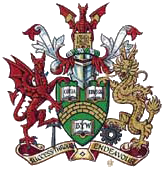
The University of Glamorgan was a university based in South Wales prior to the merger with University of Wales, Newport, that formed the University of South Wales in April 2013. The university was based in Pontypridd, in Rhondda Cynon Taf, with campuses in Trefforest, Glyntaff, Merthyr Tydfil, Tyn y Wern and Cardiff. The university had four faculties, and was the only university in Wales which had no link with the University of Wales.

Cathays Park or Cardiff Civic Centre is a civic centre area in the city centre of Cardiff, the capital city of Wales, consisting of a number of early 20th century buildings and a central park area, Alexandra Gardens. It includes Edwardian buildings such as the Temple of Peace, City Hall, the National Museum and Gallery of Wales and several buildings belonging to the Cardiff University campus. It also includes Cardiff Crown Court, the administrative headquarters of the Welsh Government, and the more modern Cardiff Central police station. The Pevsner architectural guide to the historic county of Glamorgan judges Cathays Park to be "the finest civic centre in the British Isles". The area falls within the Cathays electoral ward and forms part of the Cathays Park Conservation Area, which was designated in 1975.
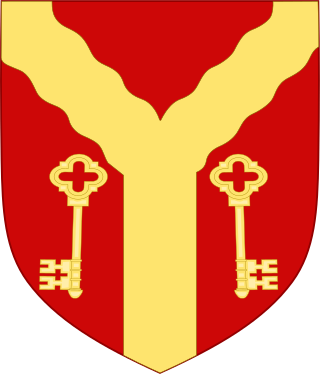
Cardiff Metropolitan University, formerly the University of Wales Institute, Cardiff and commonly referred to as Cardiff Met, is a university located in the city of Cardiff.

The Crown Buildings, which are also known as the Cathays Park Buildings, are the Welsh Government's main offices in Cardiff, Wales. The buildings were formerly used by the Welsh Office and are situated in Cathays Park. The complex consists of two buildings, Cathays Park 1 and Cathays Park 2, joined by two skybridges.
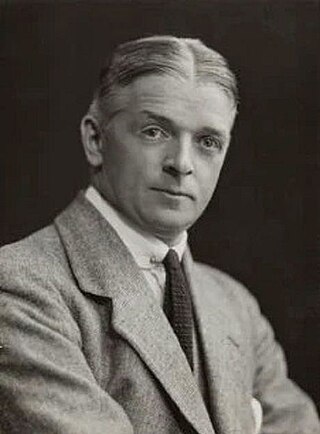
Sir Percy Edward Thomas OBE was an Anglo-Welsh architect who worked in Wales for the majority of his life. He was twice RIBA president.

The Glamorgan Building is a former county hall located at King Edward VII Avenue in Cathays Park, Cardiff, Wales. It was the headquarters of Glamorgan County Council from 1912 to 1974 and then of Mid Glamorgan County Council from 1974 to 1996. The building, which was acquired by Cardiff University in 1997 and is now home to the university's School of Social Sciences and the School of Geography and Planning, is a Grade I listed building.

The Redwood Building is a Cardiff University building, in the Cathays Park area of Cardiff, Wales.

The University of Wales Registry is the administrative headquarters of the University of Wales, located in Cathays Park, Cardiff, Wales.
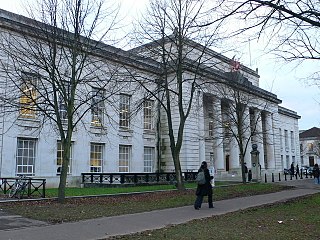
The Welsh School of Architecture (WSA) is an academic school of Cardiff University. It is generally regarded as a world leading school of architecture, and one of the top architecture schools in Britain. In 2019, QS ranked the school immediately behind Ivy League school Princeton and ahead of Pennsylvania and Yale. The Welsh School of Architecture is currently listed as number 3 in the UK by The Guardian Rankings, number 5 by the complete university guide, and number 5 in the UK by the QS Subject rankings.

The timeline of Cardiff history shows the significant events in the history of Cardiff which transformed it from a small Roman fort into the modern capital city of Wales.

The University of Wales Institute of Science and Technology was a public university college based in the centre of the city of Cardiff, Wales. In 1988, it merged with the University College Cardiff, which later became Cardiff University.

Architecture in Cardiff, the capital city of Wales, dates from Norman times to the present day. Its urban fabric is largely Victorian and later, reflecting Cardiff's rise to prosperity as a major coal port in the 19th century. No single building style is associated with Cardiff, but the city centre retains several 19th and early 20th century shopping arcades.

Percy Thomas Partnership was the trading name of the award-winning British architectural practice established some time between 1965 and 1973 as the successor to a series of earlier partnerships originally set up by Percy Thomas (1883–1969) in Cardiff, Wales in 1911/12. Percy Thomas and the Percy Thomas Partnership put their name to a number of landmark buildings in the United Kingdom including the Wales Millennium Centre, Cardiff. It opened offices overseas and completed a number of prestigious buildings in Hong Kong.

There are around 1,000 listed buildings in Cardiff, the capital city of Wales. A listed building is one considered to be of special architectural, historical or cultural significance, which is protected from being demolished, extended or altered, unless special permission is granted by the relevant planning authorities. The Welsh Government makes decisions on individual cases, taking advice from the heritage agency Cadw, the Royal Commission on the Ancient and Historical Monuments of Wales and local councils.

Sir Alexander John Gordon, CBE was a Welsh architect. Born in Ayr, Scotland, he was brought up and educated in Swansea and Cardiff. After World War II he designed several major buildings in Cardiff and Swansea, and from 1971 to 1973 he served as president of the Royal Institute of British Architects. In 1974 he summarised the needs of new architecture as 'Long life, loose fit, low energy'.
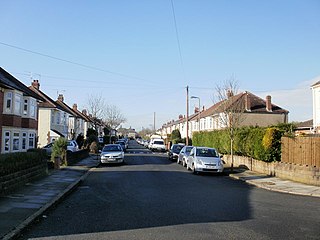
Thomas Alwyn Lloyd OBE, known as T. Alwyn Lloyd, was a Welsh architect and town planner. He was one of the founders of the Town Planning Institute in 1914 and its President in 1933. He was also a founding member of the Council for the Protection of Rural Wales in 1928 and served as its chairman from 1947 to 1959. Meic Stephens described Lloyd's work as follows:
Lloyd's small-scale buildings reflected his deep feeling for place, in both historical and environmental terms, as in the Garden Villages for which he was responsible in various parts of Wales.

Ivan Dale Owen was a Welsh architect in the modernist architectural style. The Glamorgan Archives and The Independent newspaper both described him as a 'leading figure in Welsh architecture'. He was a partner in the Percy Thomas Partnership before setting up his own architectural practice with his wife in Penarth in 1989. Among Owen's designs were BBC Broadcasting House, Cardiff, the entrance building and galleries of St Fagans National Museum of History, Cardiff, plus major developments at Cardiff University, Swansea University and Aberystwyth University.




















